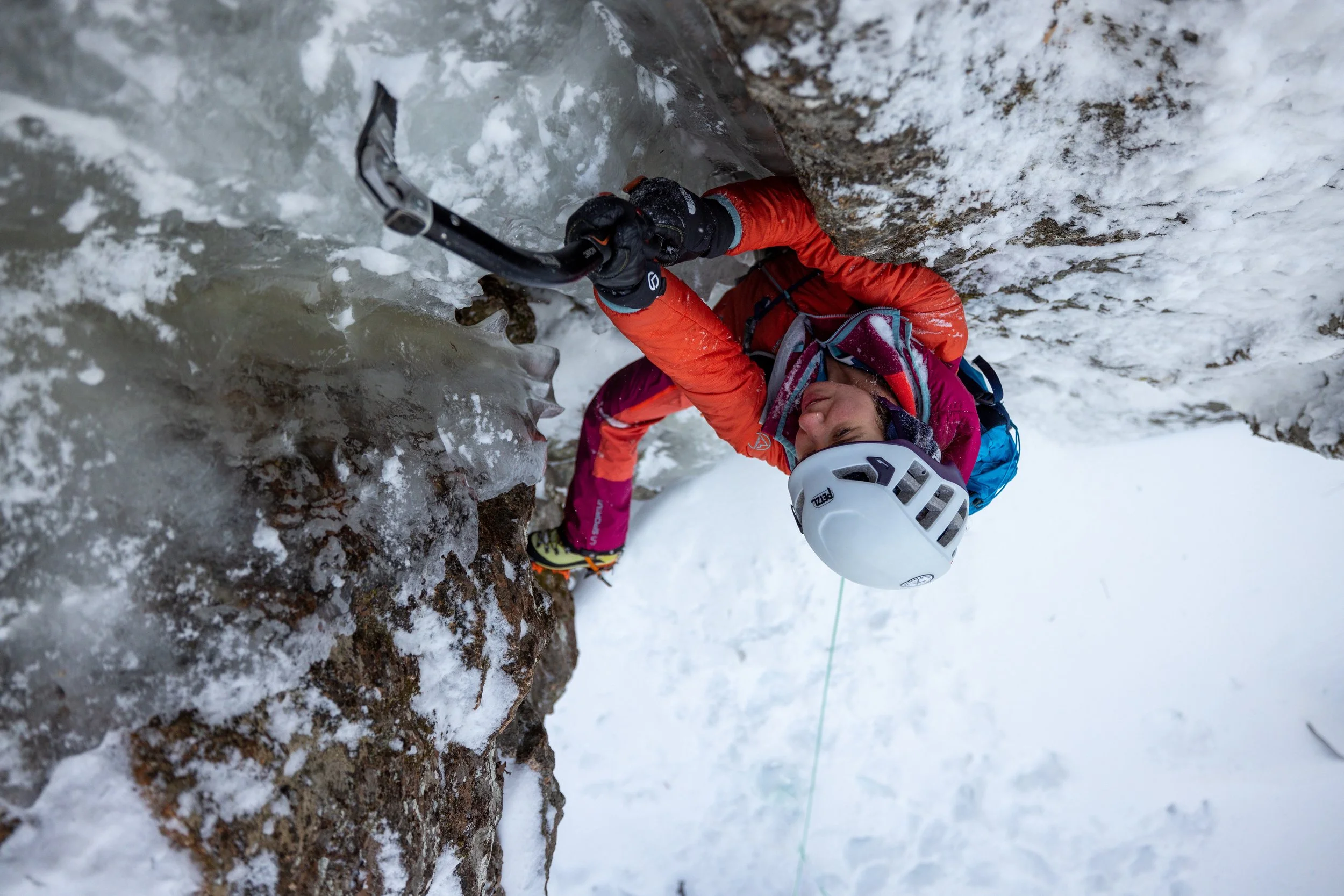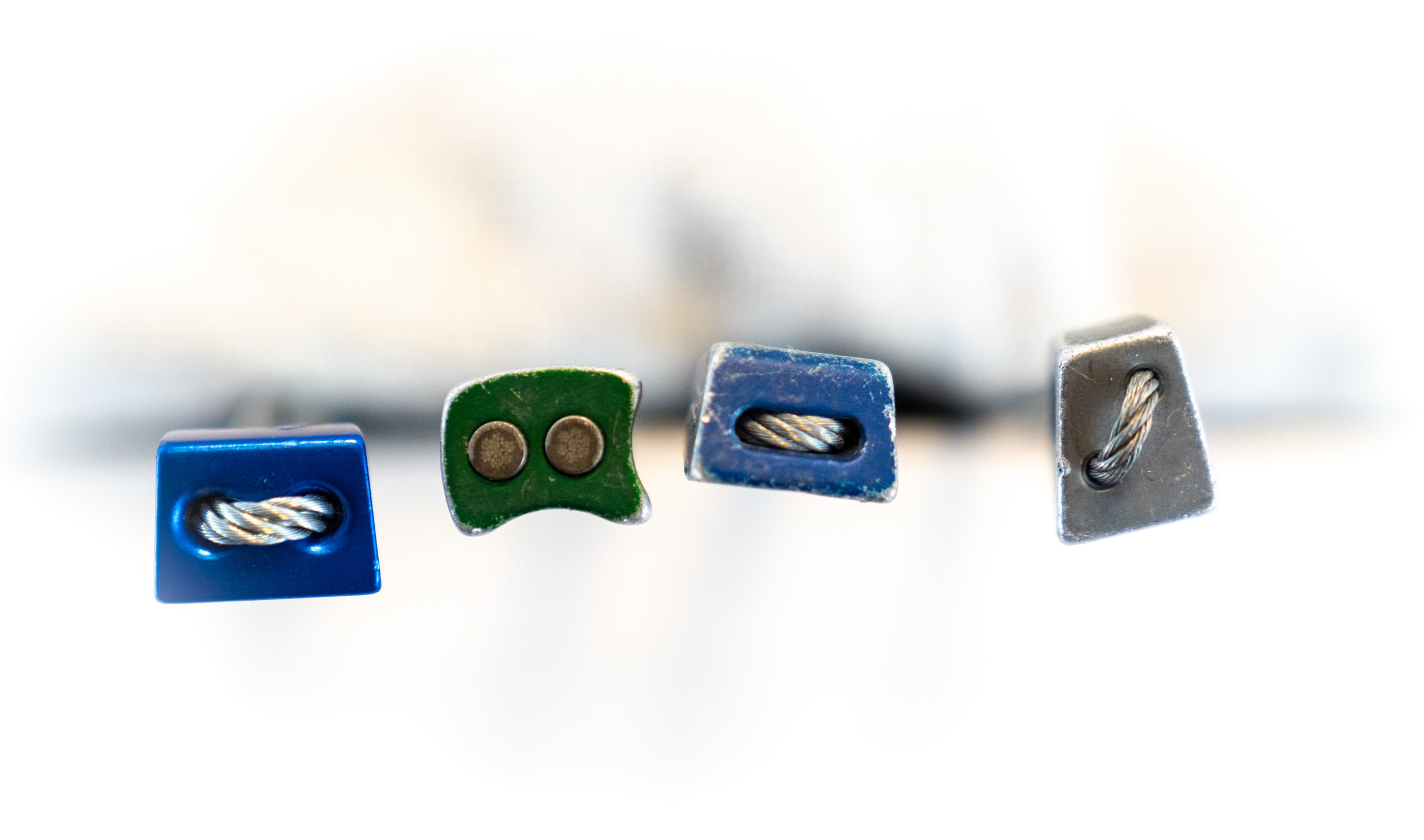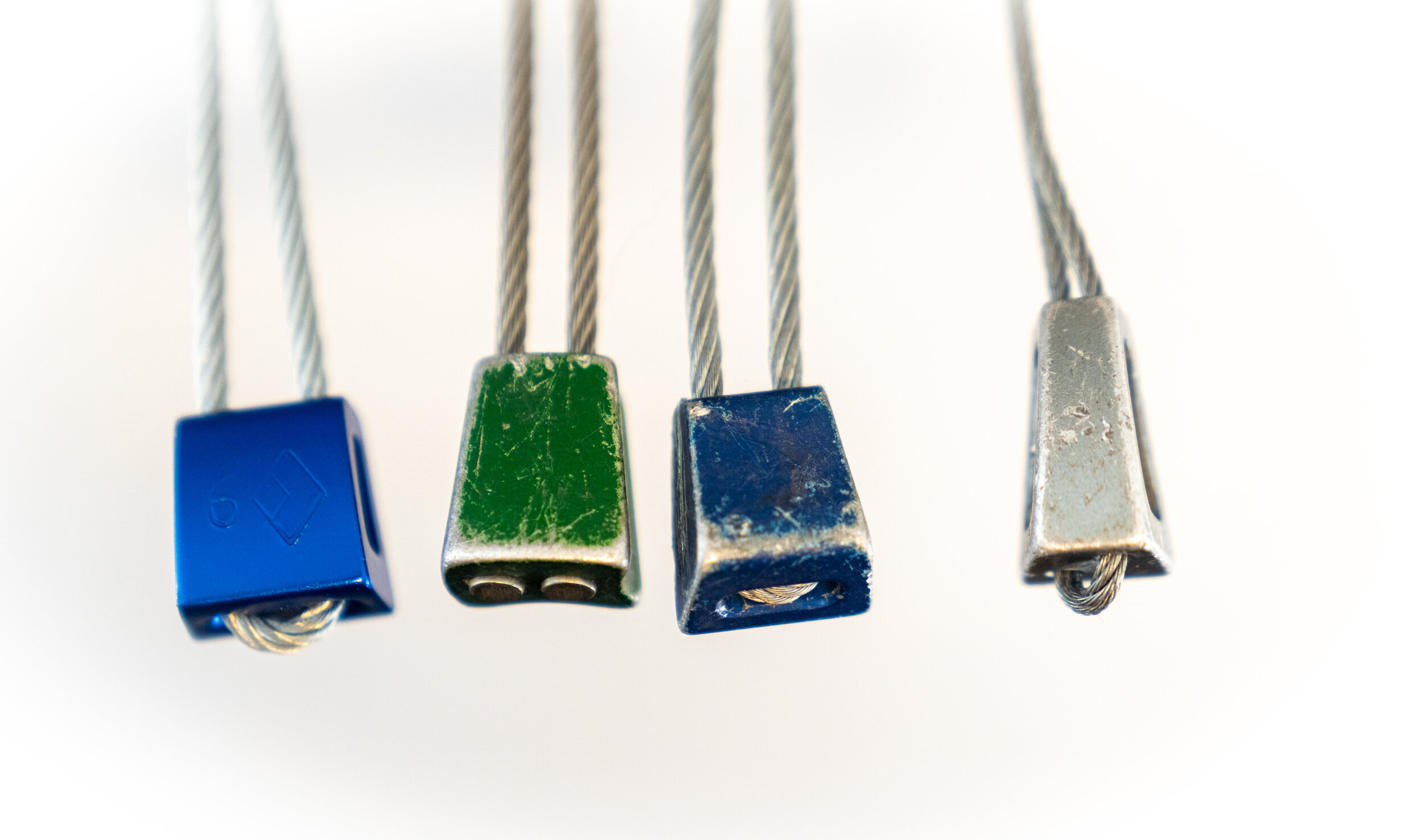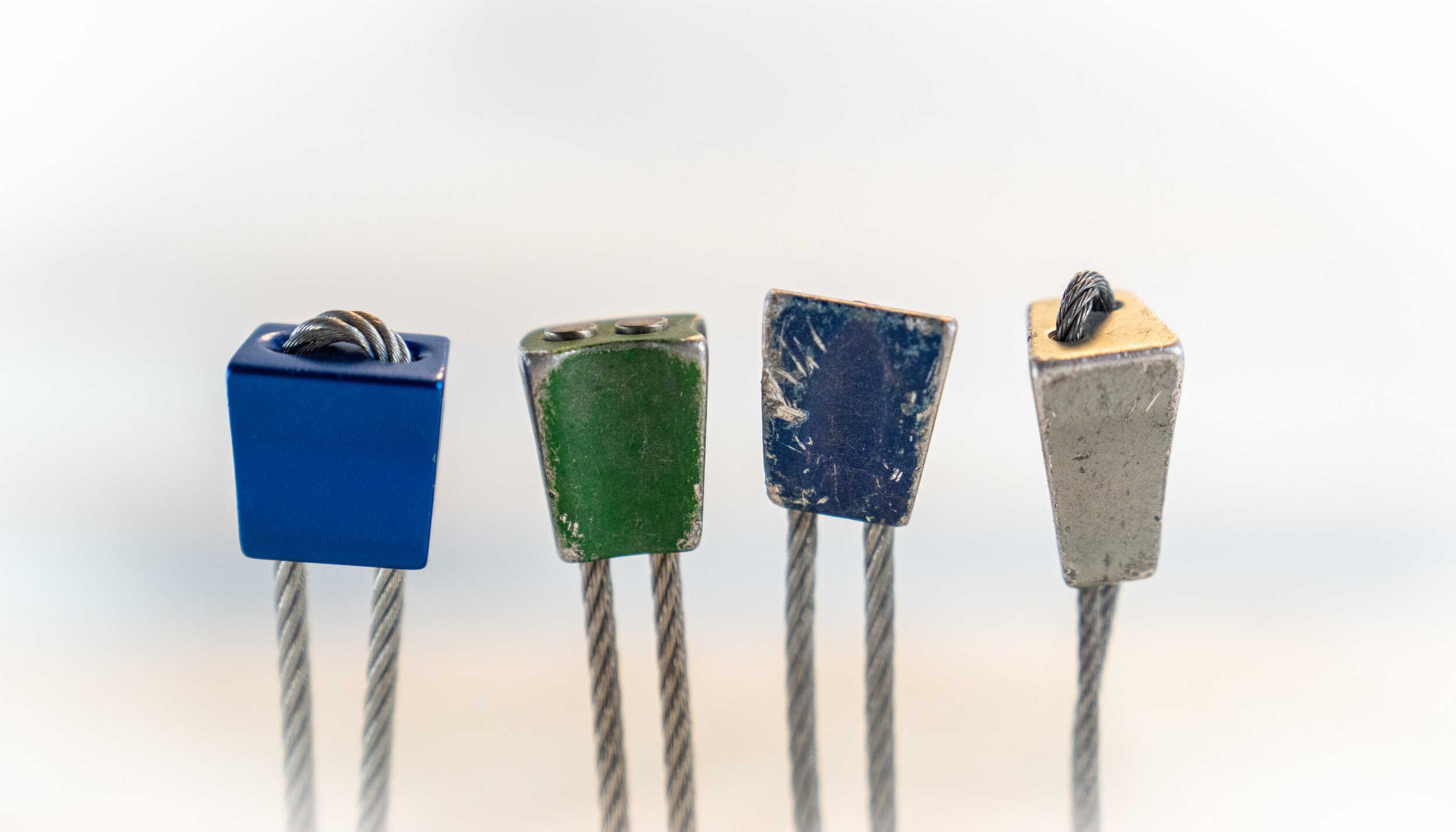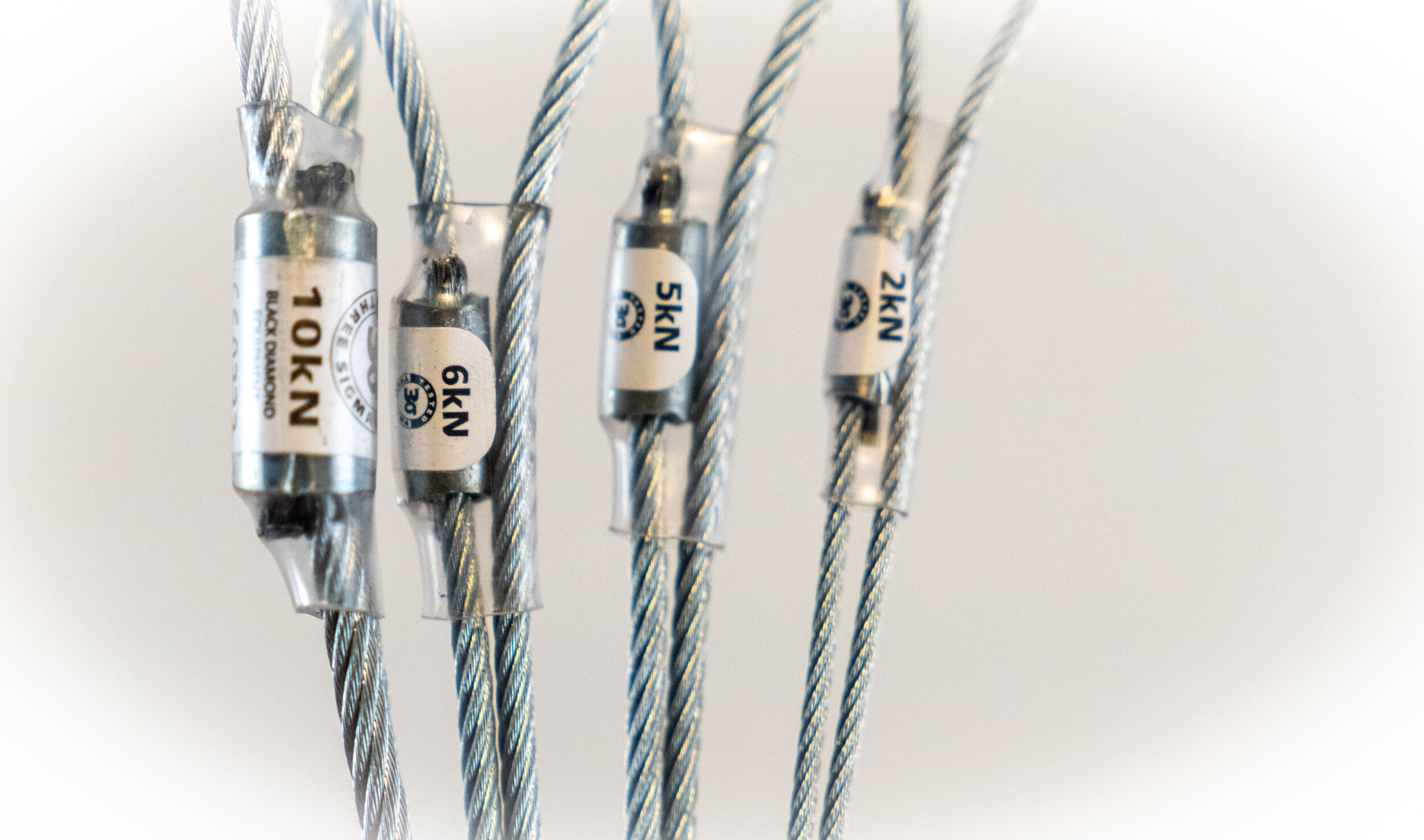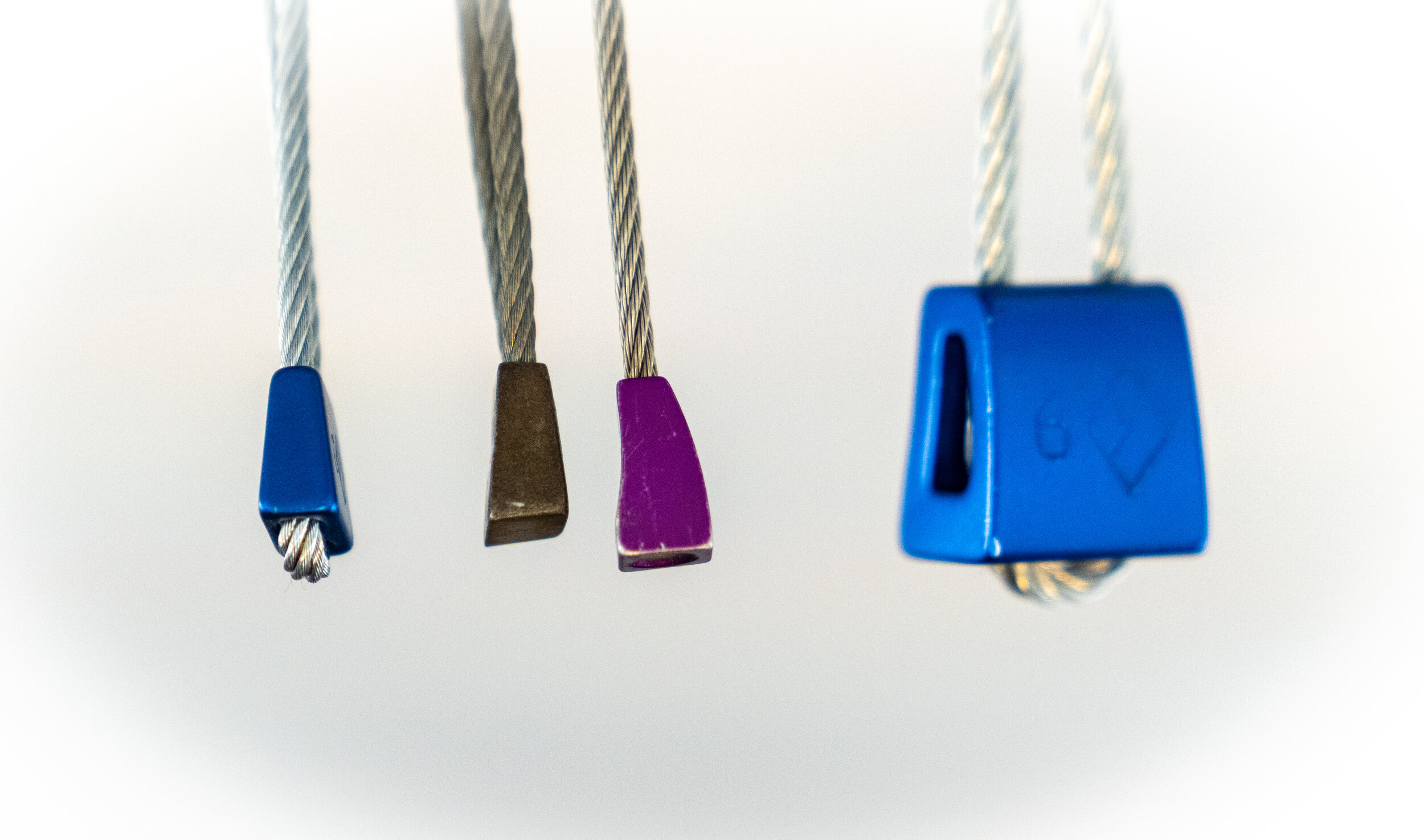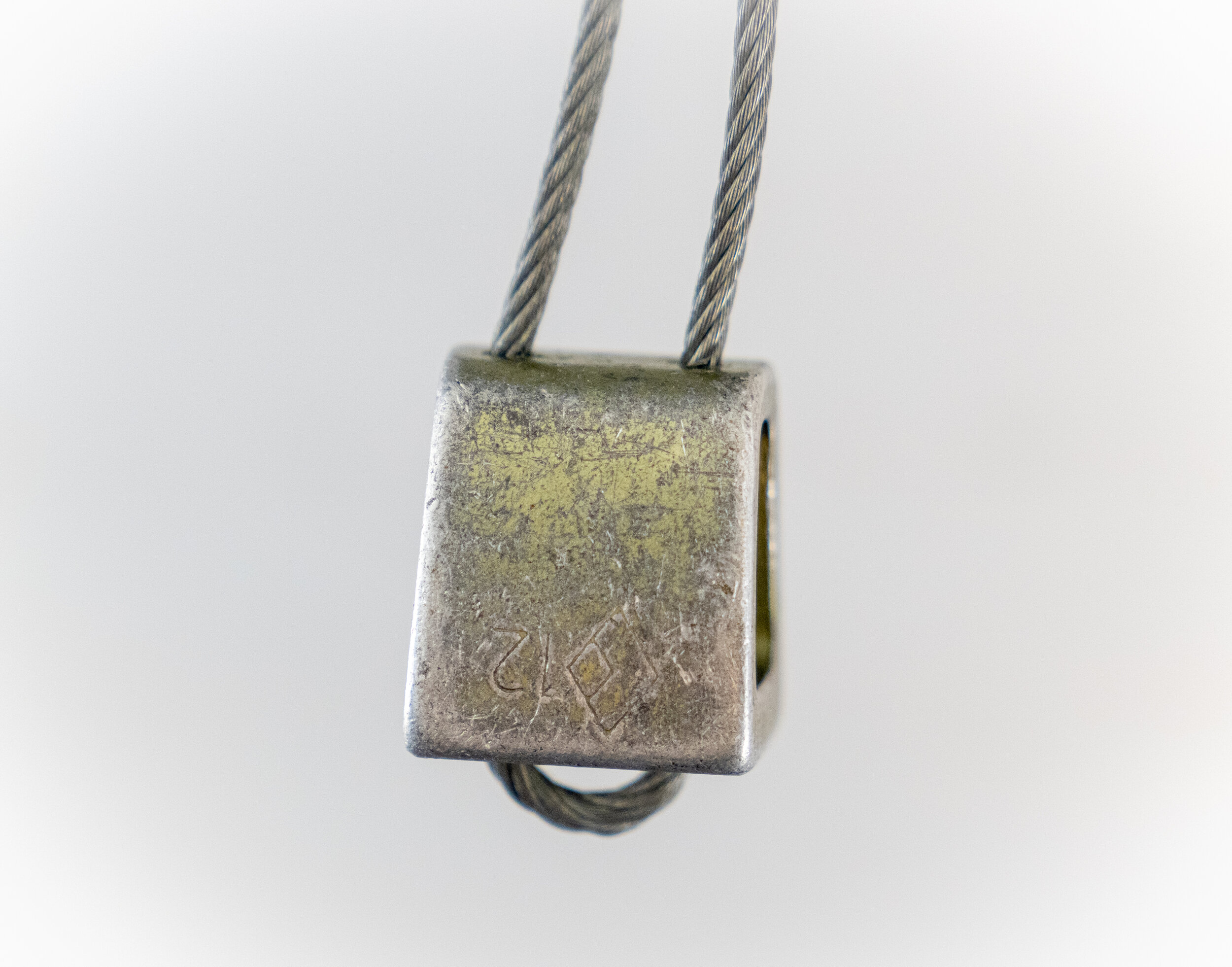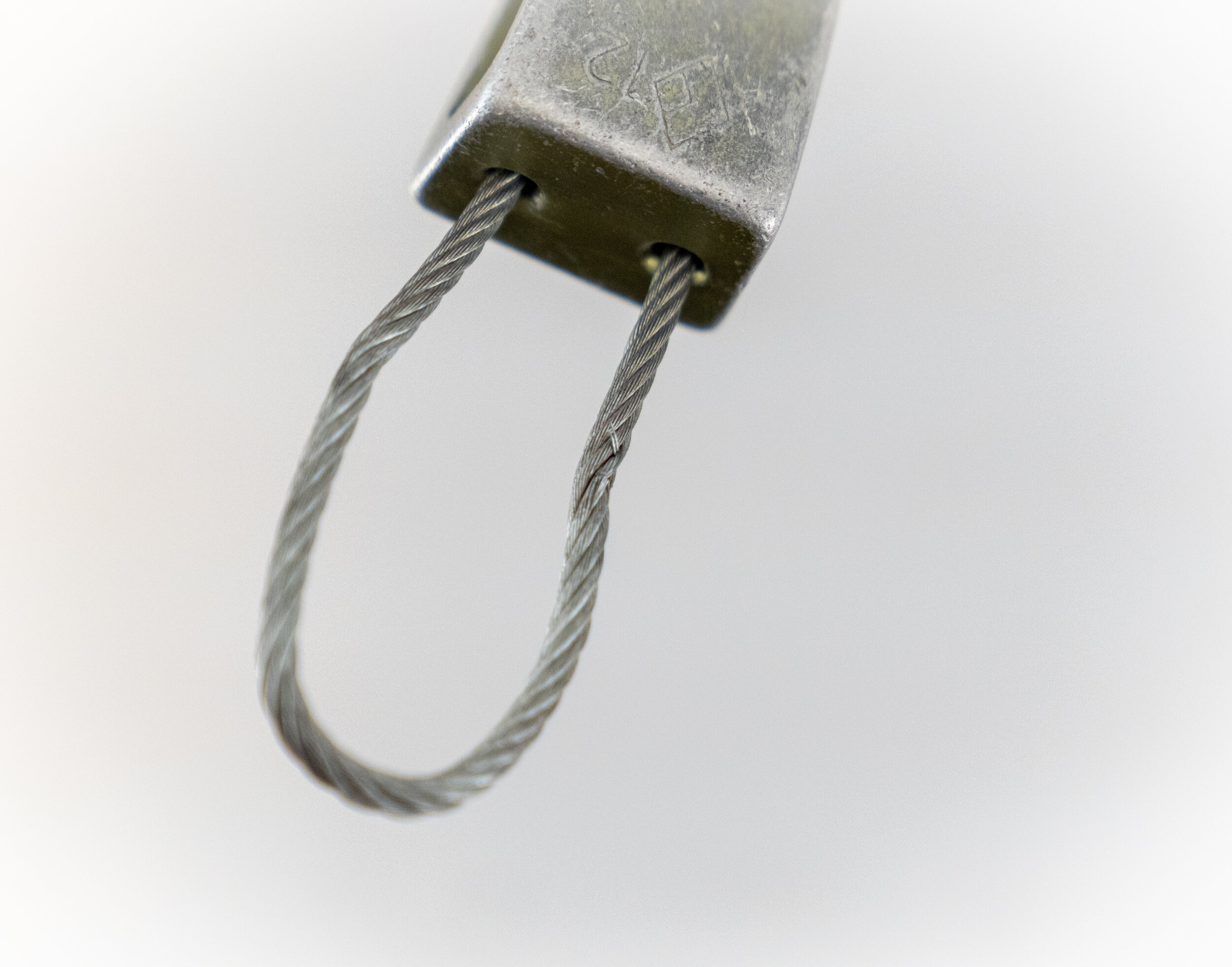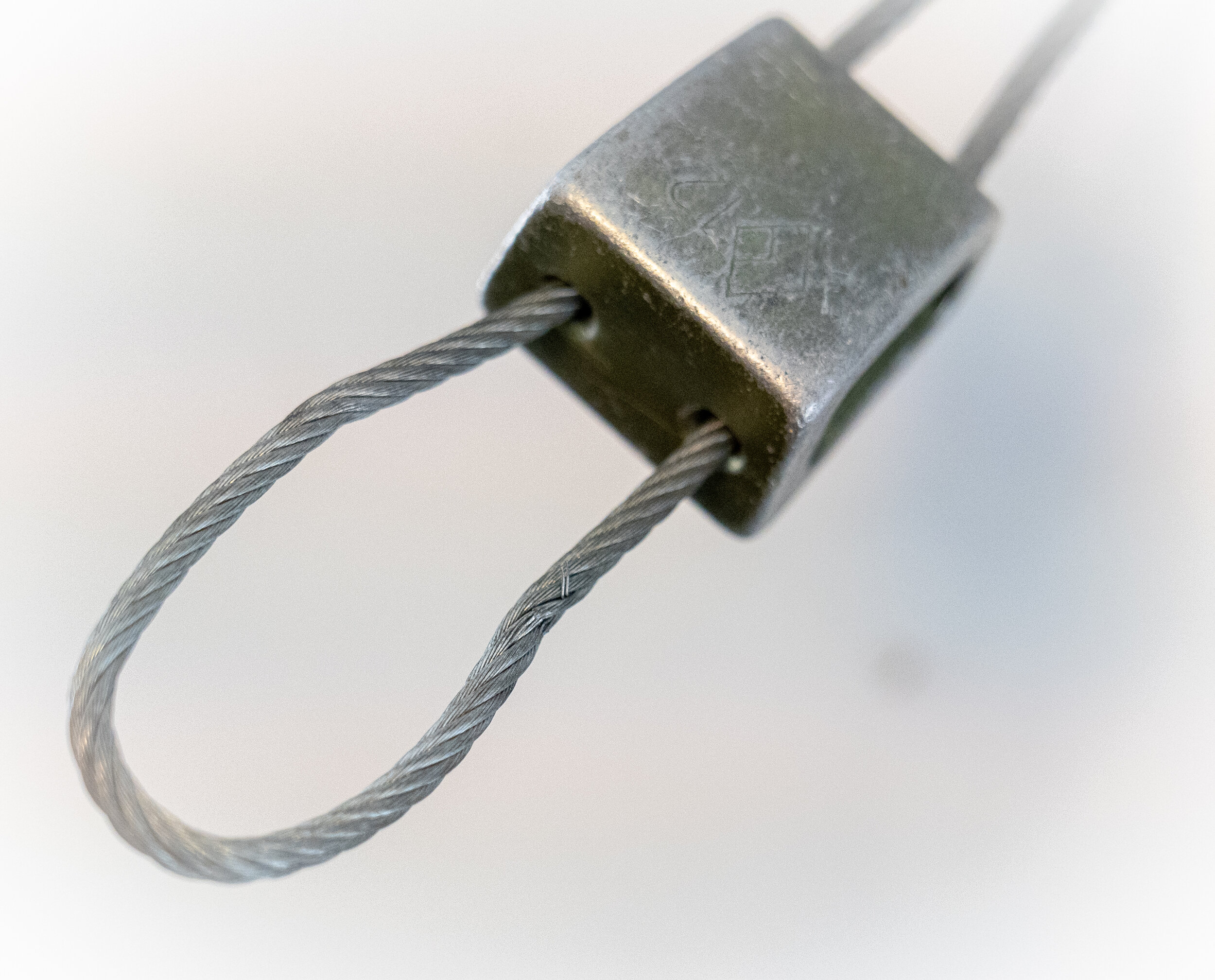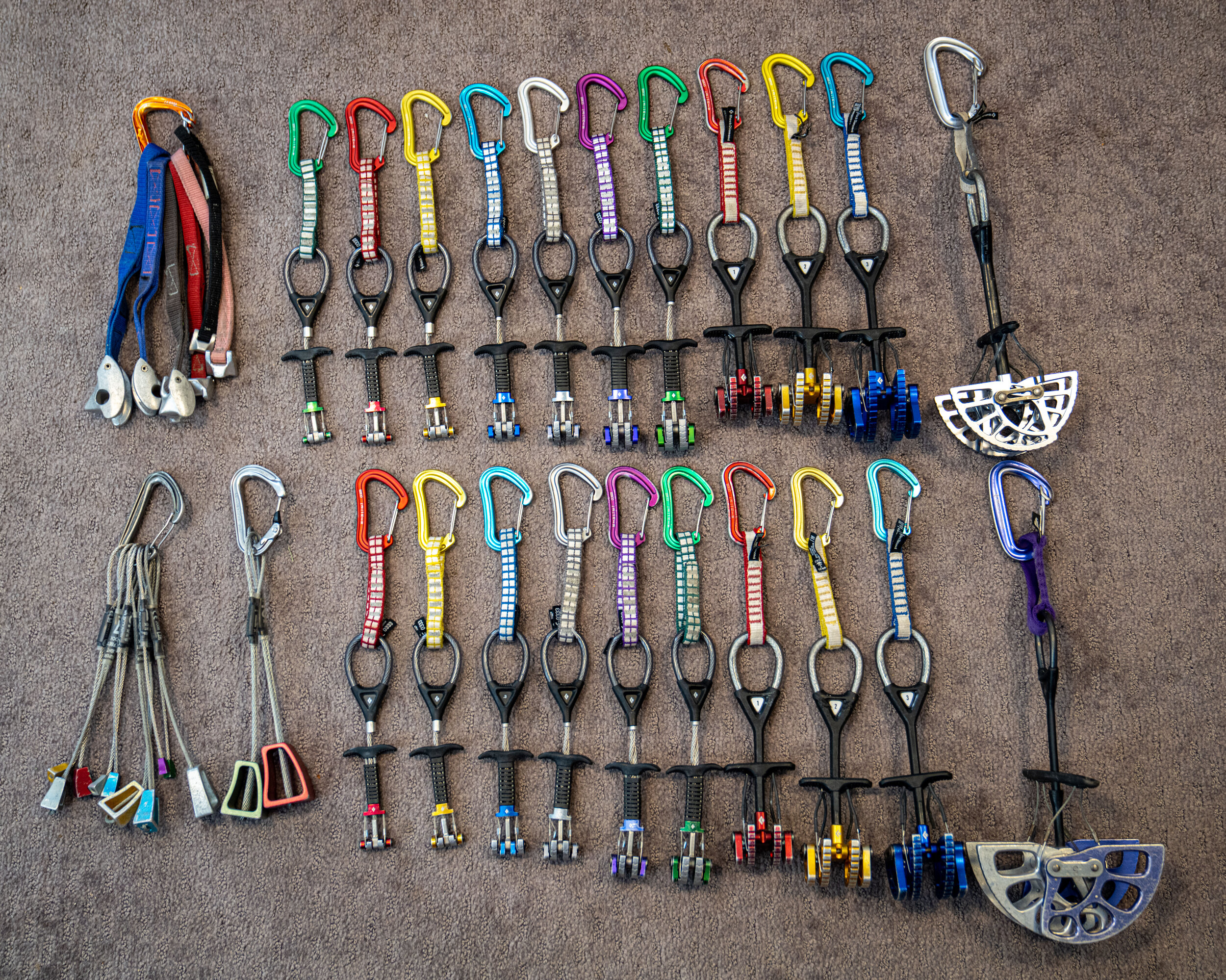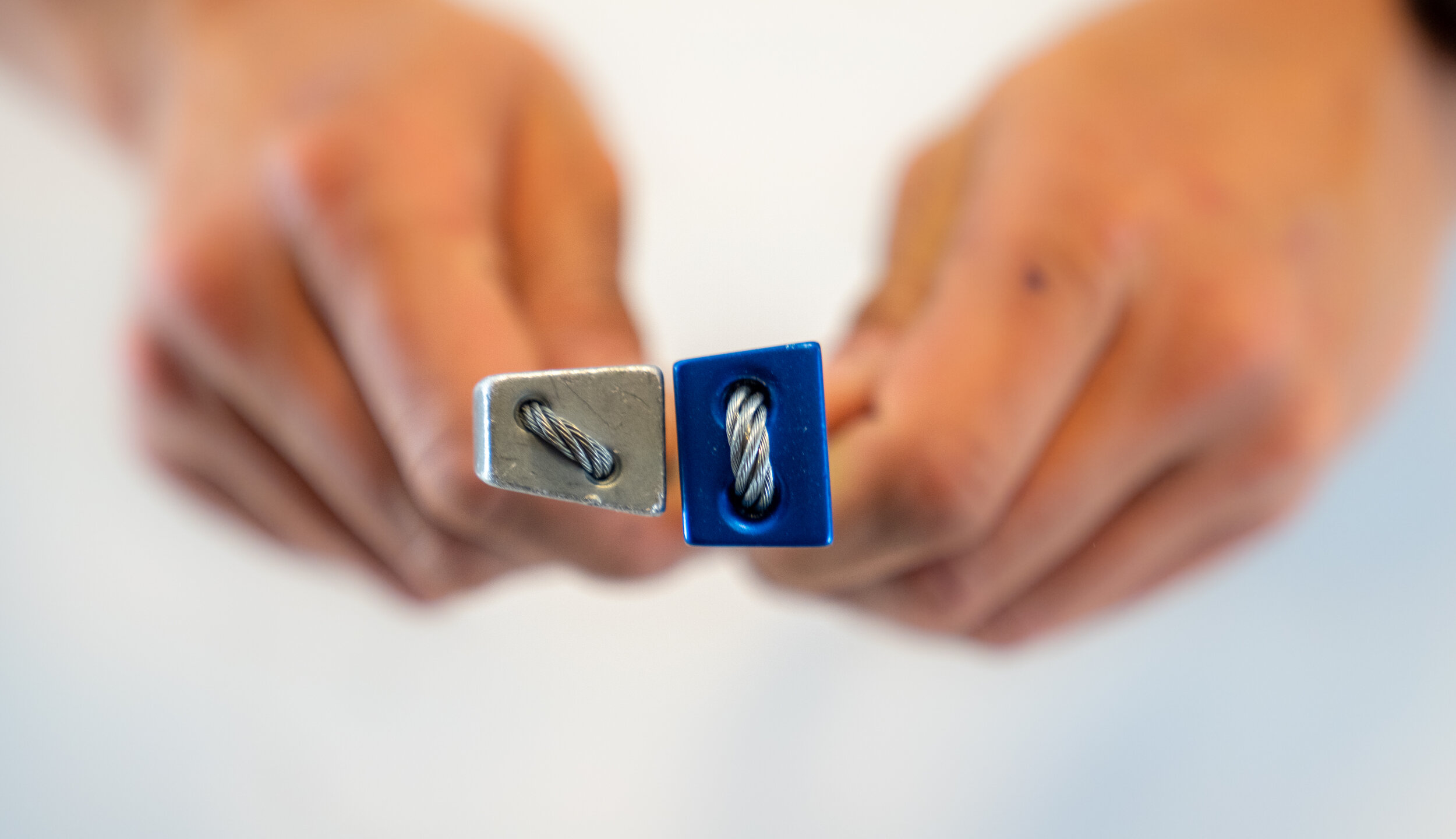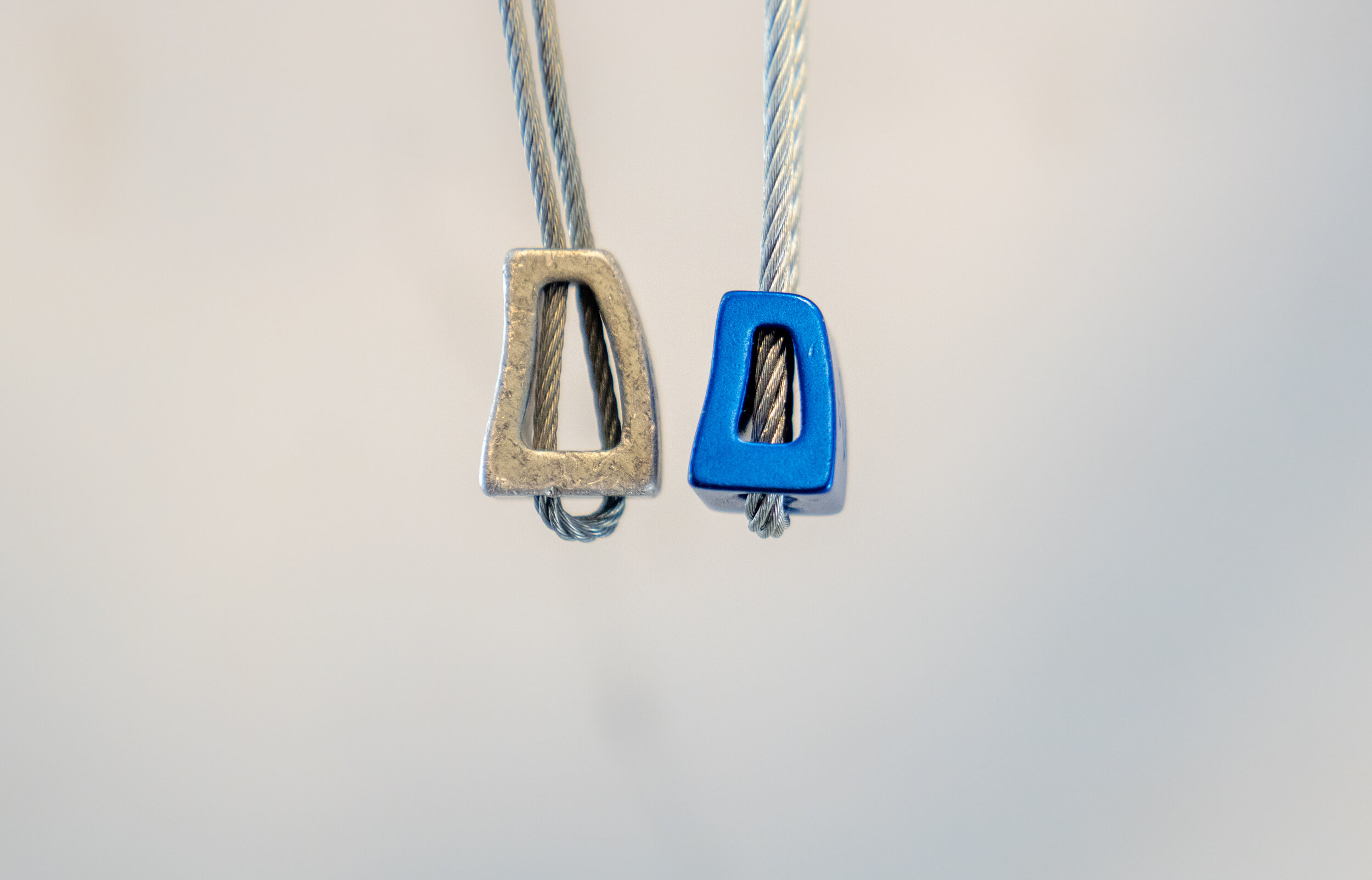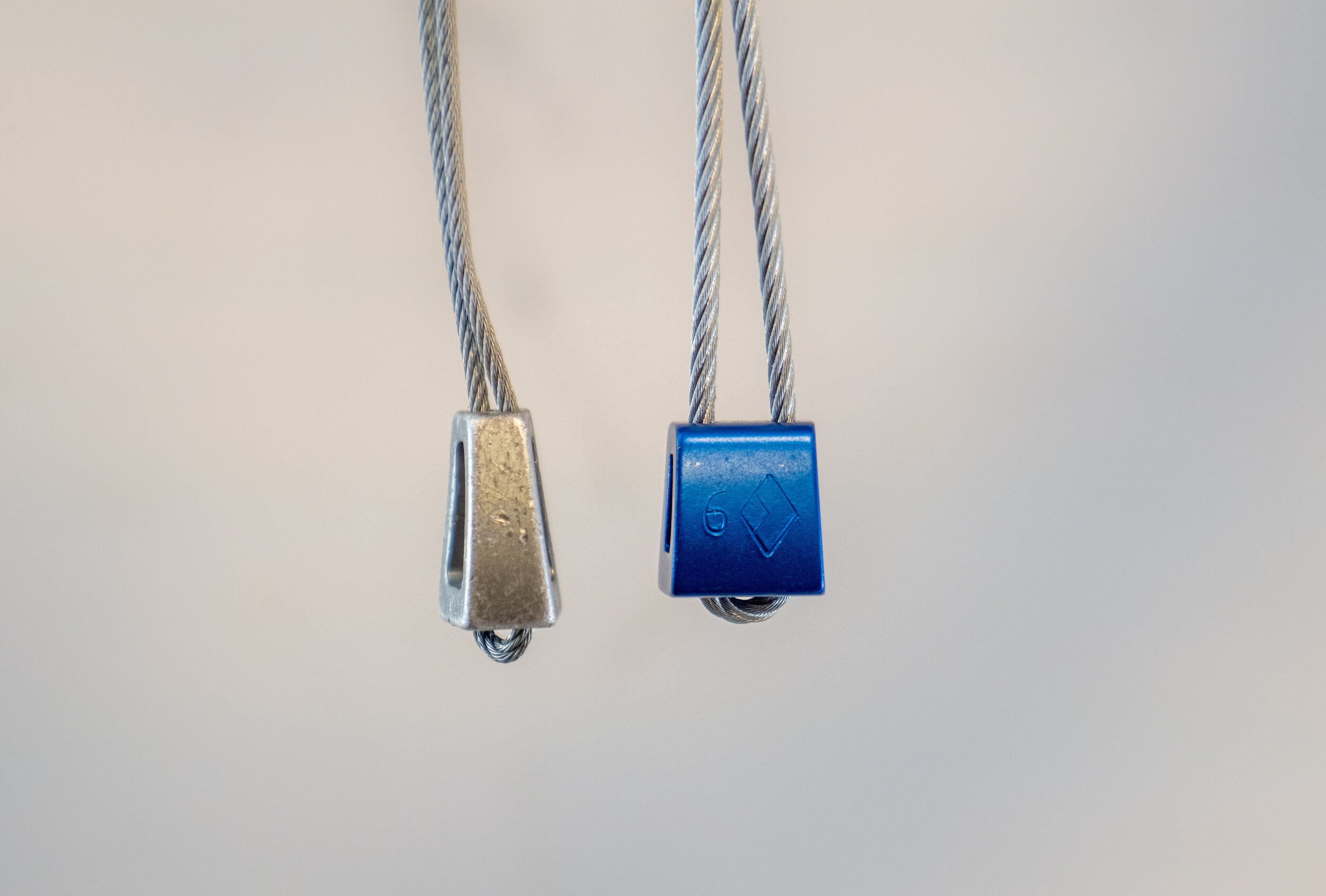Nuts Come in all different shapes and sizes… Does this matter? It does.
For sizes when you are starting out the mid ranges work well but companies do not tend to follow any particular way to size. For Black Diamond I would recommend getting #5-11, which is also a standard package for them. For the Wild Country Superlite Rocks I would get #4-10, but this breaks up 2 package deals so you might find yourself just getting #1-10.
So what is the difference with all the shapes? Put simply, the more concave and convex featured the nut is, the more angle on the bevel, the easier it will be to place, and the harder it will be to get out. You can see some of these differences in the photos below. (Left to Right: BD, Metolius, DMM, Wild Country)
Black Diamond nuts tend to be more flat and therefore a little harder to place but easier to get out. They also tend to be one of the cheaper nuts out there. I really prefer the Wild Country Super lights, they are an offset nut (meaning the sides are also beveled) and are quite light which I am always looking for that advantage.
Nuts are generally rated by the size of the wire as it will most likely be the point of failure.
Size of wire determines the strength of a nut.
Smaller nuts or micro nuts are sometimes made of different materials. Bronze and copper are softer materials and will tend to conform to the texture of the rock if they are fallen onto. Of course this means they also can be quite hard to get out. Pictured here you can see the profile of the BD nut is wider than the BD micro and the WC micro. This can play a huge factor in the ability to place them as well. (#9 BD shown for size reference)
I always warn folks about clipping fixed gear. I have seen many nuts that look good but the cable is not intact. You should inspect your nuts by pushing up the wire every once in a while to check the integrity of the wire and make sure it is not frayed. This is really the only inspection needed with nuts albeit there should be no cracks in the nut itself.
